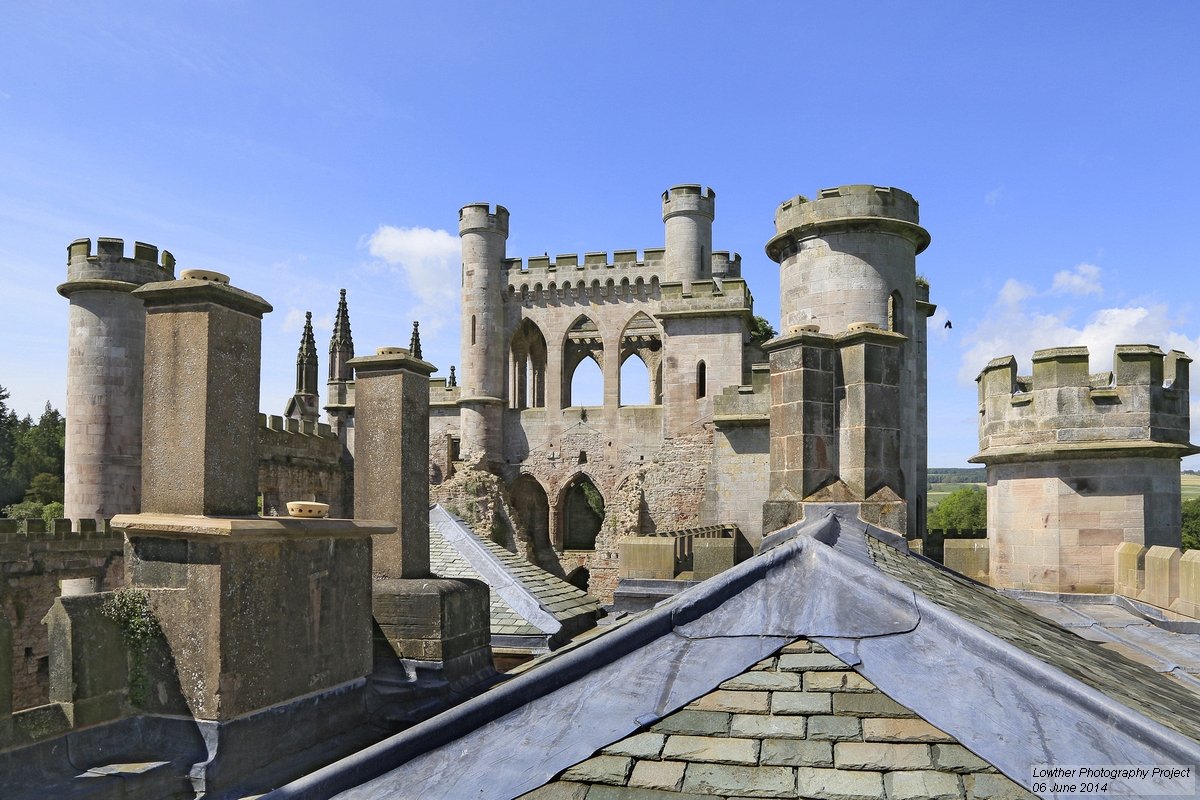
Lowther Stables
Lake District National Park
The Stables adjoining Lowther Castle were constructed 1806-9 by Sir Robert Smirke for the 1st Earl of Lonsdale. Enclosing three sides of the generous courtyard, the elegant curved sandstone facades with battlemented parapets and slate roofs once housed the Earl’s prized racehorses.
Having been abandoned when the family left the castle in 1936, the building was used by the Army during World War II and more recently for agricultural storage. The Grade II* Listed structure was in very poor repair with leaking roofs, collapsing walls and rotten structural timbers.
The project repaired the 225,000 SF (2,000m2) building and adapted it to house facilities for the 130,000 annual visitors to Lowther Castle & Gardens. The Coach House was converted into a café, with education spaces and offices for Lowther staff on the upper level. Inside the stable wings, surviving horse-boxes and finishes were retained and repaired before being imaginatively reused for ticketing, retail, a museum exhibition and public toilets. An outbuilding was converted for a biomass boiler which uses wood pellets from the Estate to generate all the building’s heating and hot water needs.
Over a hundred craftsmen and apprentices repaired the Stables using traditional building materials and techniques. While working for Feilden Clegg Bradley Studios, Miriam Kelly was Project Architect for the building’s transformation and was integral to the successful grant funding application supporting the project. Miriam led the design team from conceptual design through to completion, secured statutory consents within the Lake District National Park and administered the construction contract.
-
Lowther Castle & Gardens Trust
-
Robert Smirke, 1806 - 1812
-
Feilden Clegg Bradley Studios LLP
-
130 acres
-
2007 - 2013
Full design services
-
£6.3 m
-
Georgian Group Architectural Awards, 2017
-
Lowther Photography Project Courtesy of Lowther Castle & Gardens
“Community involvement and highly-skilled conservation craft have been critical drivers for this extraordinary project. ”

















![205956_266811236667636_173649005983860_1348481_2955177_n[1].jpg](https://images.squarespace-cdn.com/content/v1/62e6c118bc96de1fd33f0b70/3bb0b6cb-d08c-4185-9db3-e9a2dd7c6132/205956_266811236667636_173649005983860_1348481_2955177_n%5B1%5D.jpg)
![185215_266811403334286_173649005983860_1348483_6216370_n[1].jpg](https://images.squarespace-cdn.com/content/v1/62e6c118bc96de1fd33f0b70/3bbbf436-0e13-4018-a6de-65c6c992f859/185215_266811403334286_173649005983860_1348483_6216370_n%5B1%5D.jpg)
![306458_318025091546250_173649005983860_1580093_1654006817_n[1].jpg](https://images.squarespace-cdn.com/content/v1/62e6c118bc96de1fd33f0b70/f798b1c0-22be-4551-a19b-c95e5d62a3cc/306458_318025091546250_173649005983860_1580093_1654006817_n%5B1%5D.jpg)


![sculpture Gallery ceiling plaster repair[1].jpg](https://images.squarespace-cdn.com/content/v1/62e6c118bc96de1fd33f0b70/cd51ed3c-2f99-497d-b65e-a211afc6768d/sculpture+Gallery+ceiling+plaster+repair%5B1%5D.jpg)